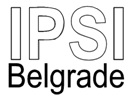Belgrade promotional video
Facts about Belgrade:
LOCATION
Belgrade is located in Serbia, on the confluence of the rivers Sava and Danube, the place where Balkan Peninsula meets the Central European Panonian plain.
LANGUAGE
The official language is Serbian (Srpski).
CURRENCY AND COINAGE
The official currency of the country is the Serbian Dinar (RSD).
Dinar coins: 1, 2, 5, 10, 20
Dinar bills: 10, 20, 50, 100, 200, 500, 1000, 5000
TOP 10 THINGS TO DO FOR FIRST TIME VISITORS IN BELGRADE:
1. Discover the Kalemegdan fortress featuring some of Belgrade’s top landmarks.
2. Discover the downtown with our self-guided tours: Knez Mihailova street, the Orthodox cathedral,Kosančićev Venac and Dorćol neighborhoods.
3. Spend an active day at Ada Ciganlija: swimming, water skiing, bungee jumping, you name it.
4. Enjoy the nightlife at the world-famous splavs – floating clubs such as Freestyler, Sound, H2O…
5. Dine in Skadarlija. Try ćevapčići (grilled minced meat) with onion, or any other grilled specialties.
6. Take the circular tram no 2 for a ride around the city center. There is a stop at the end of Knez Mihailova at Kalemegdan, or another one in the port or below Brankov bridge.
7. Explore the Zeleni Venac or Skadarlija green markets.
8. Go to the top of Ušće tower for spectacular views of the entire city and surrounding areas.
9. Visit Nikola Pašić square with the National Parliament and the Old and New Royal Palaces.
10. Explore the most important (open) museums to learn a bit more about the local culture, history and tradition. We suggest the Ethnographic museum, Military history museum, the SANU gallery and the Frescoes (Medieval art) gallery.








































